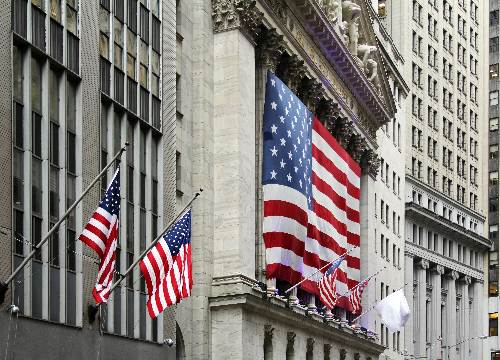
Markets went red before the opening bell on Monday after Moody’s cut the United States’ top credit rating, hammering stock futures, lifting Treasury yields, and dragging down gold.
The downgrade, announced late Friday, pushed the country’s long-term rating from Aaa to Aa1, citing deepening budget problems and rising debt costs. The fallout was immediate and brutal.
According to data from CNBC, futures tied to the Dow Jones slid by 337 points, or 0.79%, while the S&P 500 dipped 0.97%. The tech-heavy Nasdaq 100 dropped 1.19%. The credit warning came as borrowing costs stayed high and the US faced more debt to roll over.
Moody’s said the situation made the government’s fiscal outlook riskier than before, especially as Trump’s aggressive trade policies continue to shake investor confidence.
Treasuries rise as Trump tax bill adds more pressure
The downgrade also rattled the bond market. 30-year US Treasury yields rose sharply to 5.01% — their highest since April 9, the day Trump’s tariff policy set off a global wave of selloffs. When yields rise, prices fall, and Monday was a perfect example of that.
Traders dumped bonds, anticipating even more issuance thanks to Trump’s new tax legislation, which is designed to slash taxes without cutting spending.
Nicolas Trindade, a fund manager at AXA, warned that Washington shouldn’t get too comfortable. “It’s a stark reminder that the US should not take for granted its ‘exorbitant privilege’ that enabled it to issue debt at a relatively lower cost despite a very high fiscal deficit,” he said.
Tensions over the tax bill have been heating up. On Friday, five Republicans from the House Budget Committee voted against it, delaying progress. Trump, who’s been trying to rally support, posted on Friday, “Republicans MUST UNITE behind, ‘THE ONE, BIG BEAUTIFUL BILL!’ We don’t need ‘GRANDSTANDERS’ in the Republican Party. STOP TALKING, AND GET IT DONE!” The bill narrowly cleared the committee vote on Sunday.
Economists say the plan will make the fiscal deficit worse. At the end of 2024, the deficit was already 6.4% of GDP — far beyond what’s considered sustainable. The Committee for a Responsible Federal Budget estimated that the bill could tack on $5.2 trillion to national debt over ten years.
Asia reacts, China slows, gold tumbles, dollar drops
Markets overseas didn’t shrug it off either. Asia-Pacific indexes dipped on Monday as investors digested both the US credit downgrade and weak data from China.
Beijing’s retail sales climbed 5.1% in April compared to the same month last year — below Reuters’ forecast of 5.5%. Industrial output improved 6.1%, better than expected, but slower than March’s 7.7%, hinting that Trump’s tariffs haven’t hit as hard yet, but are still being felt.
Major indexes all dropped. Hong Kong’s Hang Seng fell 0.05% to 23,332.72. The CSI 300 in mainland China lost 0.48%. Japan’s Nikkei 225 ended 0.68% lower at 37,498.63, while the Topix slipped 0.08% to 2,738.39. In South Korea, the Kospi sank 0.89% and the small-cap Kosdaq tumbled 1.56%. Australia’s S&P/ASX 200 also dropped 0.58% to 8,295.1.
Gold, usually the safe space when everything else burns, wasn’t spared. Prices crashed more than 2% on Friday, the worst weekly hit since November. The metal didn’t bounce back Monday either. Traders leaned into risk after progress on US-China trade talks softened fears. But as the downgrade panic kicked in, some turned back to gold — too late to reverse the damage.
Tim Waterer, chief market analyst at KCM Trade, said, “The Moody’s downgrade of the US credit rating, and the corresponding risk-off reaction by the market, has put some pep back into the gold price.” The dollar index (DXY) also dropped 0.5%, making dollar-denominated gold cheaper for international buyers — but demand stayed weak.
Meanwhile, signs of a cooling US economy are piling up. Producer prices unexpectedly dropped in April. Retail sales slowed down. Consumer prices ticked up less than expected. That’s now fueling new guesses about when the Federal Reserve might finally lower interest rates.
Waterer added, “I think we could be looking at a July or September rate cut, but how Trump’s trade negotiations fare in the interim could be a determining factor for when the Fed next lowers rates.”
* The content presented above, whether from a third party or not, is considered as general advice only. This article should not be construed as containing investment advice, investment recommendations, an offer of or solicitation for any transactions in financial instruments.


